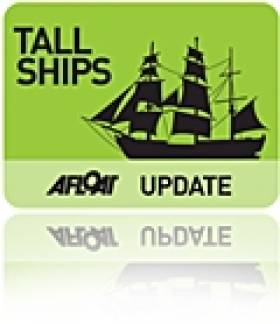Displaying items by tag: Tall Ships
Waterford subsidising 20 tall ships sailors
In advance of the return of The Tall Ships Races to Waterford in 2011, 20 young people are being offered a unique opportunity to experience life on the ocean and take part in the 2010 Race as a Trainee crew member.
Waterford City Council is offering 20 young people sponsorship of €500 to participate in one of the most exciting legs of this year's race, sailing from Kristiansand in Norway to Hartlepool in the UK. Those interested should contact [email protected] or phone 051 849640 by 15th May 2010. Mayor of Waterford, Cllr. John Halligan said, “We recognise the sail training programme as one of the most important aspects of The Tall Ships Races. Becoming a trainee crew member offers young people an incredible experience and through this sponsorship, Waterford City Council is making it easier than ever before for young people to participate. Supporting the sail training experience is something we are very happy to do and marks our commitment to the event, which will return to Waterford in 2011.”
Young people from over 30 countries will take part in this unique event that combines four days of activities in each port. Becoming a crew member on one of the ships is not only a fantastic adventure, but is also seen as hugely positive in the personal development of those taking part. Being part of the crew involves discipline and hard work, but lifelong friendships are built and the fun had by those on-board makes for an unforgettable and life-changing experience.
The voyage for the 20 successful applicants begins on Friday 30th July, or Saturday 31st July (depending on the vessel chosen by the Trainee) and finishes either on Sunday, 8th August or Monday, 9th August 2010. Applicants for the programme must be at least 18 and no older than 25 years old by 30th June, 2010. No prior sailing experience is required, just a thirst for adventure and willingness to participate in a dedicated and hardworking sail team.
Full fees for the programme are expected to be in the region of €1,000 (of which, €500 will be subsidised) and includes the flight to Norway and return flight from the UK. Those unable to join The Tall Ships Races this year can still apply for one of 100 places available next year, by contacting [email protected].
The Tall Ships Races will bring over 70 Tall Ships and their crews to Waterford in 2011, with over 500,000 people expected to attend the Tall Ships Festival for what will be Ireland’s biggest festival next year. The Tall Ships Races are presented by Szczecin and organised by Sail Training International. Further information is available at www.waterfordtallshipsrace.ie and www.sailtraininginternational.org.





























































